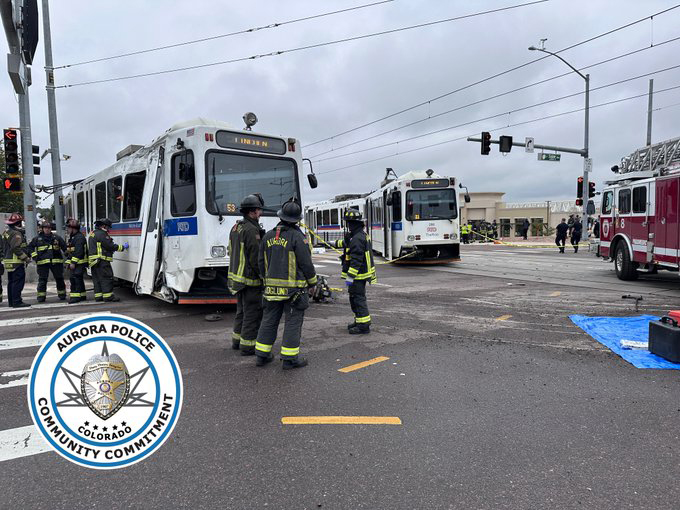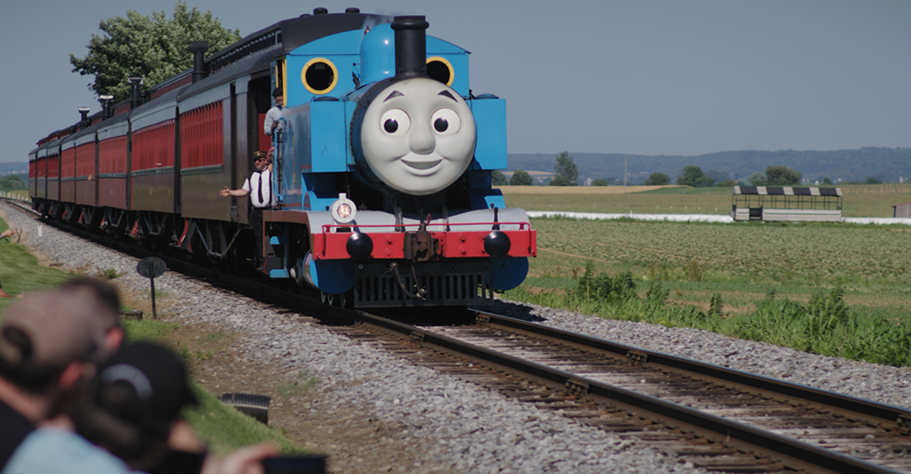
AURORA, Colo. — A Regional Transportation District light rail train that derailed in September was going almost 40 miles an hour as it entered a 10-mph curve, according to a newly released report.
The Sept. 21 accident in Aurora sent three people to the hospital, led to on-scene examination of more than 20 others, and has led to closure of a 4-mile section of the RTD’s light rail R line since the accident. That section is slated to reopen this week, according to the RTD [see “Closed portion of Denver-area light rail line to reopen …,” Trains News Wire, Nov. 21, 2022].
The accident occurred where trains make a 90-degree turn at the intersection of Exposition Avenue and Sable Boulevard. KUSA-TV reports that the RTD’s Corrective Action Plan resulting from the accident determined the derailment “resulted from operating at 38.8 mph into the 10 mph curve.” It said this was because of operator inattention, differences in operation between running on exclusive right-of-way as opposed to on streets with automotive cross traffic, and issues with the RTD’s safety management system.
The RTD had previously said it planned to require trains to stop before proceeding through the intersection, reduce speed approaching the curve, and add additional warning signs. It also aims, by June 20, 2023, to develop a plan to develop Automatic Train Stop to be installed at the site.













So while PTC – Positive Train Control, may be imperfect, properly done it ought to have prevented this incident. So how and why could this happen, or is light rail exempted from PTC requirements?
Here is a fairly new rail system. Why are 10 mph curves being built on a modern transit system?
Part of it is running at surface level on city streets.
Where is the PTC?
More PTC?, Listen to any railroad radio communications and you will hear the reality, BUGS, that are a constant barrage of delays and attempts to keep it working. Just another PITA for street running delays of cars and trains, There still are many accidents. Your idea of a bad joke Joe?
PTC in this context is Philadelphia Transportation Company, which operated the city’s trolleys. PTC did have PCC cars whose steel platforms fared better hitting a building than a conventional car (pre-1926) with a wood and steel platform.
Denver is hardly the first place a car has entered a curve at excess speed, although this was more excess than most.
The old PTC about once a year had a trolley start around a corner too fast, head off on its own, and crash into a corner store. (City corners have 35-40 foot radius curves.)
PCC perhaps?
Denver RTD is a great system. No excuse for this crash,
No reason to have closed this line. The line didn’t cause the crash. the driver did.
I could add there was no reason to close the Point Defiance bypass near Tacoma. In both cases it was the train driver driving too fast for the curve. All railroads have speed restrictions.
Very true, additional precautions can be taken, like better signage… “Warning You Fool! Very Sharp Curve!”
I find those flashing highway signs that tell you you’re going too fast to be very effective. That would not cost too much to install on railroads.